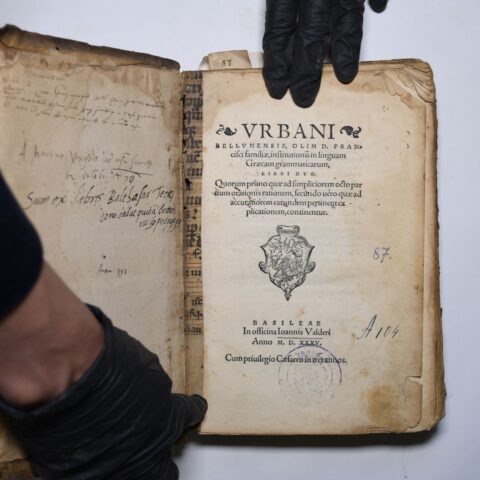Between 29 and 31 May 2023, two members of our research group, Zsuzsa Czagány and Eszter Göbölösné Gaál, visited Cluj-Napoca at the invitation of Adrian Papahagi, professor of philology, literary and book history at the Faculty of Humanities of the Babeş-Bolyai University. Professor Papahagi has been one of our team’s helpers since the beginning; We owe him the discovery of some exceptionally valuable codex fragments, including fragments of the Antiphonale and Graduale Varadinense discovered in the library of the Romanian Academy and in the Lucian Blaga University Library in Cluj. At the event organized by him, Zsuzsa Czagány gave a lecture to the students and teachers of the university entitled Fragments, chants, notations: Ecosystem of music fragmentology, while Eszter Gaál performed chants, mostly selected from the reconstructed medieval codex fragments discussed in the lecture.
However, all this was only one of the goals of the trip. The other was the on-site research of archival documents and early prints hidden in the “secret” tower of St. Michael’s Parish Church in Cluj, which had only recently been discovered. The library, which had been locked away in the tower for centuries, was only transferred to the Cluj Collective Archives and Library of the Archdiocesan Archives of Alba Iulia, established thanks to Rita Bernád, chief archivist of the Diocese of Alba Iulia. (For more information on the secret library and archives, see the description of the institution’s website: https://szmk.ro/egyhaz/ter/intezmenyek/leveltar/).
Looking through the collection of about 1800 books, we did not find any medieval manuscript fragments with music notation that served as full covers. However, we found four books from the 16th and 17th centuries, inside which shorter or longer strips of parchment strengthening the binding and spine remained. In the ten-volume complete edition of St. Augustine’s works, published between 1541 and 1543 by Froben in Basel, strips split from the same medieval manuscript were used in the binding of each volume. Unfortunately, the stripes are very narrow, and only two of them show music notation, so identifying them will be challenging for research.
Zsuzsa Czagány







